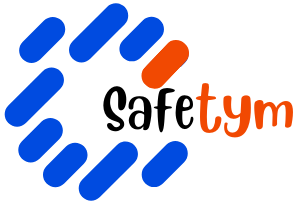The internet is a wonderful resource for children, but it also poses many risks and dangers. As a parent, you want to protect your child from online threats such as cyberbullying, phishing, malware, inappropriate content, and predators.
In today’s digital age, technology has become an integral part of our lives, and children are no exception. From smartphones and tablets to laptops and gaming consoles, kids are spending more time online than ever before. While the Internet offers a wealth of information and opportunities for learning and entertainment, it also presents potential risks for young users.
As parents and caregivers, it’s crucial to take proactive steps to ensure our children’s safety online. But how can you do that without restricting their access to the benefits of the web?
Here are some simple steps you can take to keep your child safe online:
1. Educate yourself and your child about online safety
The first step is to learn about the potential hazards and how to avoid them. You can use websites like Safetym, which provide reliable and up-to-date information on online safety for parents and children. You can also talk to your child about the importance of being careful and responsible online, and set some ground rules for their internet use.
2. Establish Open Communication
The most important thing you can do to keep your child safe online is to communicate with them regularly and openly. Ask them what they do online, what they like and dislike, and who they talk to. Listen to their concerns and opinions, and offer support and guidance. Don’t be judgmental or accusatory, but rather try to understand their perspective and needs. By building trust and rapport with your child, you can encourage them to come to you if they encounter any problems or issues online.
Foster a safe environment where they feel comfortable sharing their experiences, concerns, and questions. Let them know that you’re there to support them and guide them through any challenges they may encounter online.
3. Set Clear Guidelines and Expectations
Establish clear rules and expectations regarding internet usage. Discuss appropriate online behavior, including respectful interactions with others, avoiding cyberbullying, and protecting personal information. Clearly define acceptable online activities, such as educational websites, age-appropriate games, and safe social media platforms.
4. Promote Digital Literacy
Empower your children with digital literacy skills to make informed decisions online. Teach them to identify credible sources of information, recognize online scams and phishing attempts, and evaluate the trustworthiness of websites and social media content. Guide them in creating strong passwords and protecting their online privacy settings.
Explore the digital world together with your children. Play age-appropriate games online, watch educational videos, and engage in interactive learning activities together. This shared experience can strengthen your bond and provide opportunities to discuss online safety in a natural context.
5. Monitor Online Activity/Use parental controls and filters
While maintaining open communication, consider using parental control tools to monitor your children’s online activity. Most devices, browsers, and apps have settings that allow you to limit or block certain features or content that may be harmful or inappropriate for your child. For example, you can restrict access to adult websites, disable in-app purchases, or monitor your child’s online activity. You can also use third-party software or services that offer more advanced parental controls and filters.
These tools can provide insights into their browsing habits, social media interactions, and time spent online. Use this information to guide further discussions and reinforce online safety practices.
Respect your child’s privacy and autonomy online. While it is important to supervise and protect your child online, it is also important to respect their personal space and interests. Do not spy on your child or invade their privacy without their consent or knowledge. Do not criticize or judge their online choices or preferences. Instead, try to understand their perspective and foster a trusting relationship with them.
6. Engage in Shared Online Experiences
Explore the digital world together with your children. Play age-appropriate games online, watch educational videos, and engage in interactive learning activities together. This shared experience can strengthen your bond and provide opportunities to discuss online safety in a natural context.
7. Promote Healthy Online Habits
Encourage healthy online habits by establishing limits on screen time and encouraging breaks from digital devices. Encourage physical activity, outdoor exploration, and face-to-face interactions with friends and family to maintain a balanced lifestyle.
Never post or trade personal pictures. Never reveal personal information, such as address, phone number, or school name or location. Use only a screen name and don’t share passwords (other than with parents). Never agree to get together in person with anyone met online without parent approval and/or supervision.
8. Encourage your Child to use Strong Passwords and Privacy Settings
Another way to protect your child online is to help them create strong passwords that are hard to guess or hack, and change them regularly. You can also teach them how to use privacy settings on social media and other platforms, so they can control who can see their personal information, posts, and messages.
9. Seek Additional Resources
Utilize available resources to stay informed about emerging online trends, potential risks, and effective safety strategies. Consult with child development experts, educational institutions, and online safety organizations for guidance and support.
10. Be a Good Role Model
Finally, you can keep your child safe online by being a good role model yourself. Show them how to use the internet in a positive and productive way, such as learning new skills, finding useful information, or connecting with friends and family. Avoid spending too much time online or engaging in risky or inappropriate behavior yourself. By setting a good example, you can inspire your child to follow suit and enjoy the internet safely and responsibly.
Remember, your role as a parent or caregiver extends to the digital world. By taking proactive steps to educate, protect, and guide your children, you can empower them to navigate the online landscape safely and responsibly.




